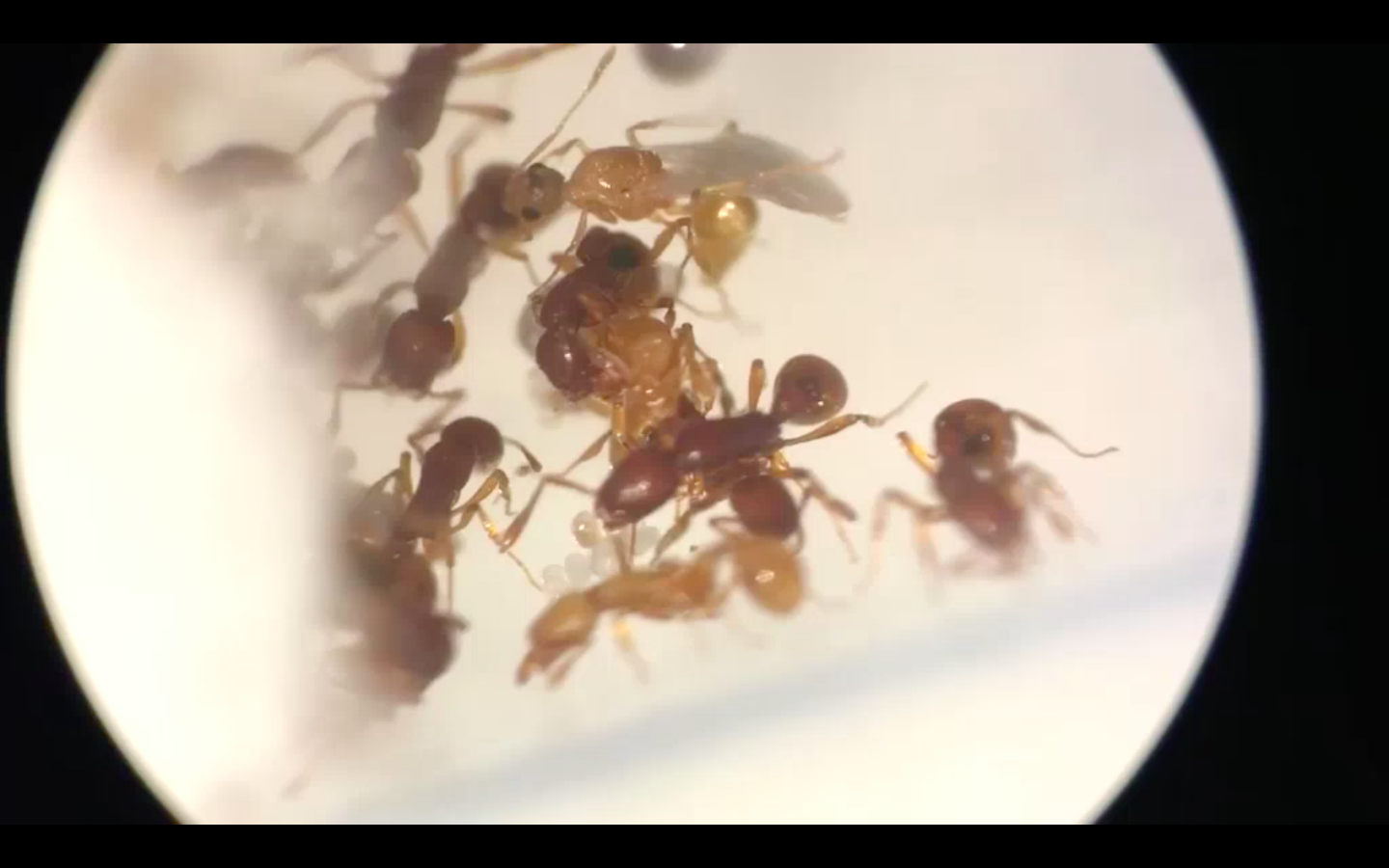For the first time, a live colony of an extremely rare species of ant was discovered in the forested areas of Mandai.
NUS entomologists Mark Wong and Gordon Yong found about 30 T. rex (Tyrannomyrmex rex) ants, as they are called, which were first identified as an individual species from a single dead ant found in 2003.
According to Live Science, no one had ever collected more than a single specimen or studied a T. rex ant alive for an extended period.
The site where the ants were found was previously a plantation, with the environment showing signs of disturbance from military training and urban litter.
This shows these rarer-than-striking-4D ants aren't restricted to pristine forests, contrary to what was previously suggested from their limited study.
Why it's linked to the fearsome dinosaur
The T. rex ant was first discovered in Malaysia in 1994. Then in 2003, an entomologist Fernando Fernández found a single dead T. rex ant from Malaysia which he established as a new genus.
Now, why the link to the long-extinct ferocious and carnivorous dinosaur? According to Fernández, that's because its tiny mandibles resemble the stubby arms of the more well-known T-rex, and according to Wong, it has its name also because of its pointed snout.
Wong and Yong observed the colony, which consisted of 13 worker ants, as well as eggs, larvae and pupae for 10 days.
Here's what they found out from their daily stalking according to a paper on these guys that they published in March:
1. T. rex ants are likely nocturnal.
During daylight hours, the ants were inactive — whether they are exposed to light directly or not. At night time, about two to four workers were observed exploring the foraging area in the dark even in the presence of light.
2. Unlike their dino "predecessors", they are timid and avoid aggression.
When they were intimidated — either by nudging with forceps or when encountering invertebrates e.g. a millipede, the ants typically curl up and freeze till the threat appears to be less imminent, before taking the chance to quickly move away.
They do sting, however, if their "hand" is forced — in other words, if the threat facing them is really significant.
During the study, a heroic individual stung the millipede when it intruded the cluster and brood within the nest tube over multiple "curled-up" workers.
3. They are also picky specialised eaters.
T. rex ants showed curiosity to the food items offered by Wong and Yong by antennating (poking with their antennae) the items while keeping a distance but eventually moved away.
Some of the food options in a buffet spread offered to them include millipedes, centipedes, mites, springtails, spiders, termite workers, workers and other ant species. The researchers even tried commercial honey — but none were sufficient to whet their appetite.
This selective diet and kiasi nature might be why they are so elusive — the researchers found T. rex ants are not attracted to the sugar and food that we have at home unlike the uninvited guests that we often encounter.
There's of course plenty more to find out about the ants and their habitat, which Wong noted has not been sufficiently studied — pieces of moist, rotting wood submerged in soil.
And Wong and Yong have naturally returned to the area in a bid to find more of them, but have yet to succeed in the repeat endeavour.
You can watch the T. rex ants in action here in this National Geographic video:
Here are totally unrelated but equally interesting articles:
Ah kong ah ma’s every day guide to Tiong Bahru
If you are a millennial, you should probably stay away from MNCs
Top image: Screenshot from National Geographic video
If you like what you read, follow us on Facebook and Twitter to get the latest updates.
If you like what you read, follow us on Facebook, Instagram, Twitter and Telegram to get the latest updates.
